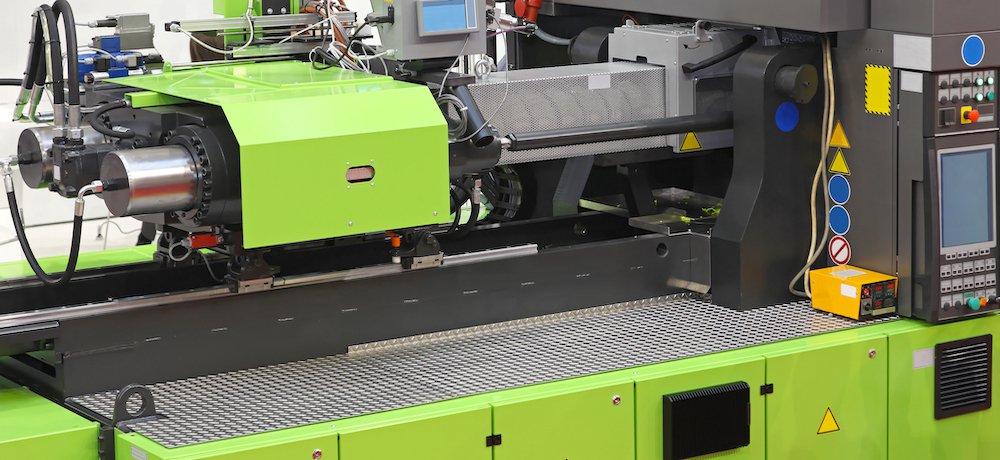The medical industry has found a steadfast ally in injection moulding. Elia Guidorzi, international marketing executive at Tecni Waterjet discusses how this technique plays a crucial role in healthcare advancements.
What is injection moulding?
Injection moulding, at its core, is the art of crafting objects by injecting molten material into a mould. It’s akin to a modern-day alchemy where raw plastics transform into life-saving devices.
Its roots stretch back to the late 19th century, evolving from producing combs and buttons to intricate medical components. This journey has been marked by continuous refinement and adaptation, mirroring the medical field’s own evolution.
How does injection moulding work in medical device manufacturing?
Delving into the specifics of injection moulding reveals a complex yet elegant process. It’s a ballet of machinery, materials, and meticulous control, choreographed to produce precision medical devices.
Stages of injection moulding
Material preparation: The alchemy begins with preparing the plastic or polymer.
Mould design: Moulds are intricately designed, akin to blueprints for future medical innovations.
The injection process: Molten material is injected into the mould – the moment of transformation.
Cooling and solidification: The material cools, taking the shape of its new destiny.
Ejection and finishing: The final piece is ejected, a birth of sorts, ready to enter the world of medicine.
Materials used in medical injection moulding
The choice of materials in injection moulding isn’t arbitrary. It requires a careful balancing act between functionality, safety, and cost.
Types of plastics and polymers
A variety of materials are used, each with unique properties suitable for different medical applications.
Properties and selection criteria
The selection is driven by factors like biocompatibility, durability, and flexibility.
Design considerations for injection moulded medical devices
In the realm of medical devices, design isn’t just about aesthetics; it’s a matter of life and functionality.
Factors influencing design
These include the intended use, the environment in which the device will operate, and the complexities of human anatomy.
How to choose the right injection moulding partner for medical devices
Selecting an injection moulding services partner is a decision that echoes through every device produced, impacting countless lives.
Criteria for selecting a manufacturing partner:
Expertise and experience: A track record in medical device manufacturing is crucial.
Certifications: Look for partners with relevant industry certifications.
Advantages of injection moulding in medical device manufacturing
Injection moulding isn’t just a manufacturing process; it’s a strategic advantage in the medical industry.
Key advantages
Cost-effectiveness: It reduces costs without compromising quality.
Scalability: From prototype to mass production, scalability is seamless.
Precision and consistency: It offers unmatched accuracy, crucial in medical applications.
Material variety: A plethora of material choices allows for tailored solutions.
Challenges and solutions in medical injection moulding
Managing sterility and cleanliness
In an industry where sterility is paramount, injection moulding rises to the occasion, employing stringent sterilisation protocols.
Overcoming design complexities
The process deftly navigates the labyrinth of complex designs, often required in medical devices.
Material selection and testing
The careful selection and rigorous testing of materials ensure that only the most suitable and safe materials are used.
Innovations and trends in medical injection moulding
The future of injection moulding in medical applications is bright, fuelled by relentless innovation and technological advancements.
Case studies: successful applications of injection moulding in medical devices
Prosthetics and orthopaedic devices
Injection moulding has revolutionised prosthetics, offering customised, durable solutions.
Surgical instruments and components
Instruments crafted through this process boast precision and reliability, critical in surgeries.
Drug delivery systems
From insulin pens to inhalers, injection moulding plays a pivotal role in drug delivery mechanisms.
The role of quality control in medical injection moulding
Quality control is the guardian angel of injection moulding, ensuring each product meets the highest standards of safety and efficacy.
Key quality control measures
Rigorous testing: Every product undergoes extensive testing.
Continuous monitoring: The process is monitored to ensure consistent quality.
Compliance with standards: Adhering to international standards is non-negotiable.
Environmental and regulatory considerations
Compliance with medical standards and regulations
The process strictly adheres to regulations like FDA and ISO, ensuring patient safety and product efficacy.
Sustainability in medical injection moulding
The industry is making strides towards sustainability, reducing its environmental footprint while maintaining product quality.
Best practices in medical injection moulding
Design optimisation: Streamlining design for efficacy and manufacturability.
Material selection: Choosing materials that balance functionality and safety.
Process control and optimisation: Fine-tuning the process for optimal results.
Conclusion
Injection moulding in medical device manufacturing isn’t just a process; it’s a pillar of modern medicine. Its role, often understated, is undeniably critical, shaping the future of healthcare one device at a time. As technology advances, so will the capabilities of injection moulding, promising even more innovative and life-changing medical devices.
Source: medicalplasticsnews.com









